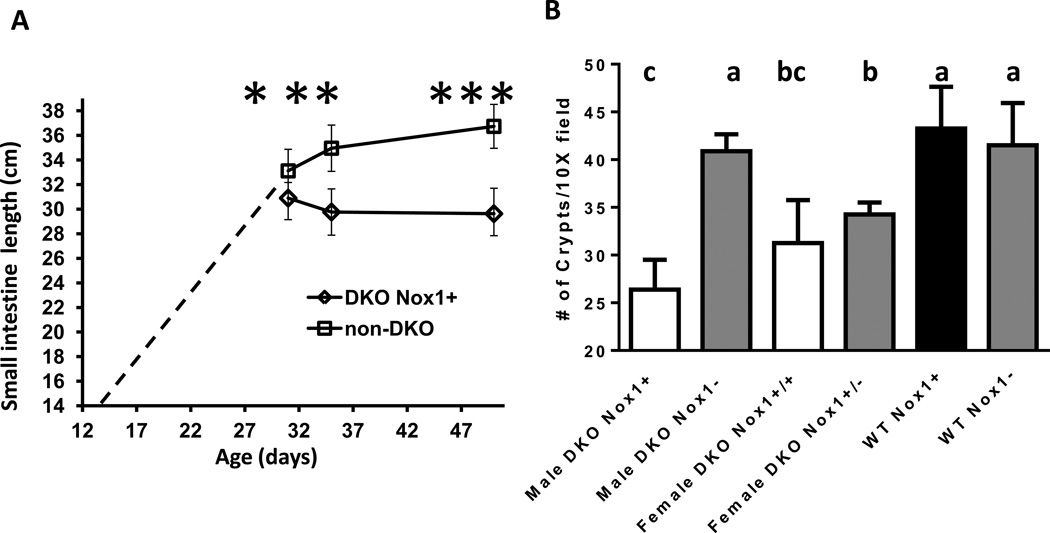Figure 3.
Comparison of male small intestine length between 31, 35 and 50 days old and ileum crypt counts in 50-day-old mice of different genotypes. Panel A. The length of small intestine measured from DKO and non-DKO mice was from 31-, 35- and 50-day-old males. The dashed line from 14 days to 30 days is extracted from non-DKO mice (N=7, 4, 24, 12, 7 for 14, 19, 21, 28, 30 days of age, respectively). The number of mice in each group is: 9 DKO and 14 non-DKO each for 31-and 35-day-old, and 13 DKO and 29 non-DKO for 50-day-old. Error bars are SD. The asterisk signs indicate significant difference between the age-matched DKO and non-DKO groups as well as between non-DKO mice of 3 different ages. Variation in DKO ileal length across age is not significantly different. Panel B. Ileum crypt density determined from 4 areas (10X field or 2 mm each) of H&E stained tissue per mouse. The number of mice in each group is: 5 male DKO Nox1+, 6 male DKO Nox1−, 4 female DKO Nox1+/+, 4 female DKO NOx1+/−, 4 male WT Nox1+ and 6 male WT Nox1−. The counts from H&E stained tissue agreed with an independent assessment on Ki-67 IHC stained sections. The groups with different number of crypts have different letter, where a>b>c. The groups share the same letter are not different; i.e. bc is not different from b or c.

